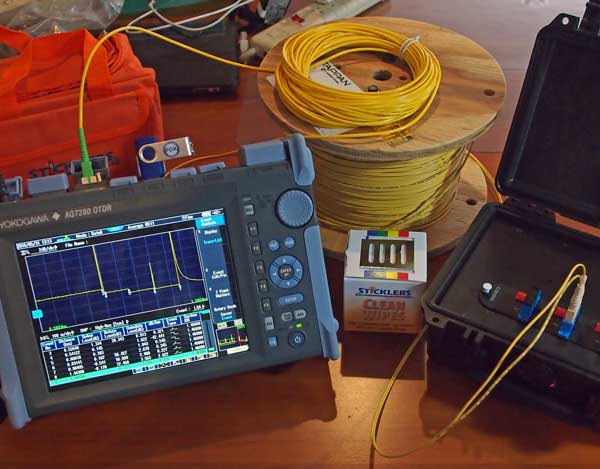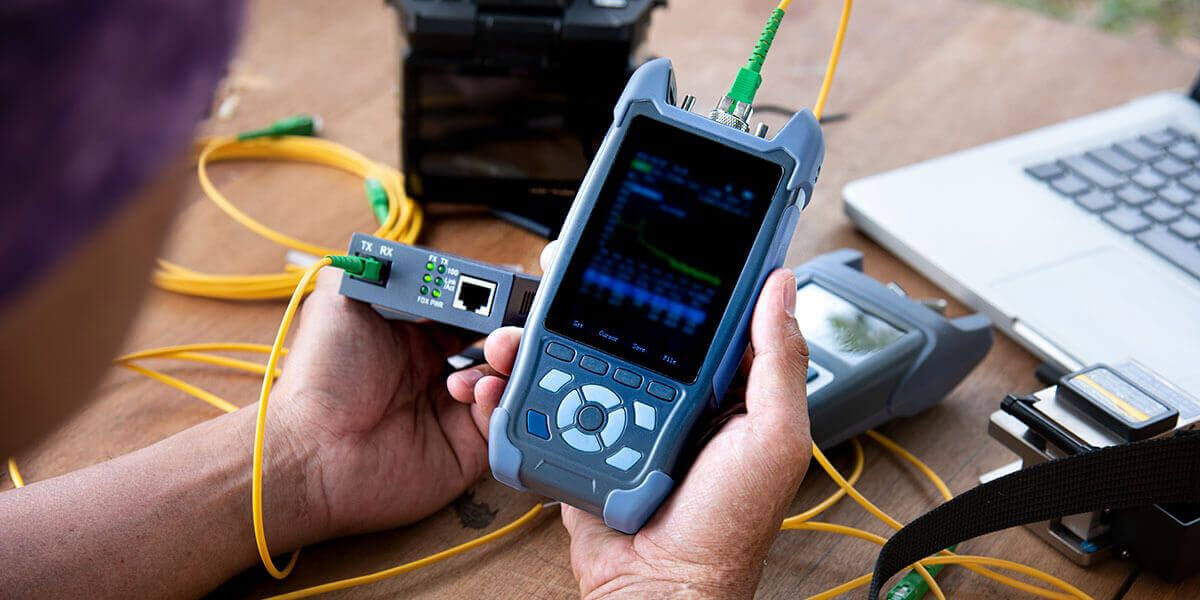High-performance fibre testing equipment is essential for reliable material quality assessment.
High-performance fibre testing equipment is essential for reliable material quality assessment.
Blog Article
The Function of Optical Fiber Testing in Ensuring High Quality and Effectiveness in Connectivity Solutions
In today's swiftly developing electronic landscape, the value of optical fibre screening can not be overstated, as it offers as a cornerstone for making certain the high quality and performance of connectivity solutions. As innovation continues to breakthrough, the future of optical fibre screening positions fascinating difficulties and opportunities that warrant closer examination.
Relevance of Optical Fiber Testing
The value of optical fibre screening can not be overemphasized in making sure the integrity and efficiency of communication networks. As the foundation of modern telecoms, optical fibers assist in high-speed data transmission, making their dependability vital to operational success. Testing acts as an aggressive step to determine potential problems such as signal loss, depletion, and physical damages, which can jeopardize network efficiency.
Routine screening permits the confirmation of installation top quality and the detection of flaws that could impact information integrity - optical fibre diameter analyser. By utilizing strenuous screening protocols, network drivers can mitigate the threats connected with network failures, including downtime and monetary losses. Optical fibre screening makes certain compliance with industry standards and laws, enhancing the general high quality of service provided to end-users.
Inevitably, the systematic assessment of optical fibers adds to the long life and performance of interaction systems. It allows stakeholders to make informed decisions regarding upkeep, upgrades, and troubleshooting. In a landscape where information is significantly crucial, prioritizing optical fibre testing is important to sustaining durable and efficient connectivity solutions, thus supporting the needs of modern electronic atmospheres.
Kinds Of Optical Fiber Examinations
Different testing approaches are utilized to guarantee the functionality and integrity of optical fibers within communication networks. These tests can be generally classified into two main kinds: setup tests and maintenance examinations.
Installment examinations are carried out promptly after the installment of optical fiber cords to validate their efficiency and stability - fibre testing equipment. The most typical setup tests consist of Optical Time-Domain Reflectometry (OTDR) tests, which assess the top quality of the fiber by determining faults or breaks, and end-to-end loss tests, which gauge the complete optical loss from one end of the fiber to the various other
Upkeep tests, on the various other hand, are executed occasionally to make sure ongoing efficiency and find prospective issues with time. These consist of aesthetic inspection, which checks for physical damages or inappropriate setups, and continuity tests, which confirm that the signal can pass via the fiber without interruption.
In addition, advanced examinations such as Polarization Mode Diffusion (PMD) and Chromatic Dispersion (CD) examinations can be conducted to examine the fiber's performance under different problems. By employing these diverse screening approaches, service technicians can keep high standards of high quality and integrity in optical fibre networks.
Benefits of Routine Examining
Routine screening of optical fibers plays a vital function in maintaining the overall efficiency and reliability of communication networks. By conducting normal evaluations, companies can ensure that their fiber optic installments satisfy sector standards and operate efficiently. This proactive technique helps to recognize possible weaknesses and deterioration with time, permitting timely interventions prior to issues rise.

Cost-effectiveness is another benefit. By addressing small issues early, companies can prevent the high expenses related to major repairs or system failings. Regular screening likewise cultivates conformity with regulatory demands, making certain that the network follows necessary safety and performance criteria.
Usual Concerns Identified
Recognizing common issues in optical fibre networks is essential for keeping optimal performance and dependability. Different aspects can add to interruptions, including physical damages, poor installation techniques, and ecological impacts.
Physical damages, such as bends, breaks, or abrasions, can significantly deteriorate signal top quality. Inappropriate setup methods, including too much stress or inadequate safeguarding of cables, may bring about increased depletion and loss of connection. In addition, ecological elements such as temperature level changes, moisture ingress, and rodent interference can jeopardize the stability of the fiber.
Adapter problems also frequently arise, with incorrect placement or contamination resulting in boosted insertion loss. Splicing mistakes can introduce considerable signal destruction if not executed with accuracy.

Addressing these common issues via regular optical fibre testing not just boosts visit site network reliability but also maximizes general performance, making certain that connection remedies continue to be durable and effective.
Future Patterns in Checking
As the demand for high-speed connectivity proceeds to climb, the future of optical fibre screening will significantly focus on automation and progressed analytics. The integration of expert system (AI) and device knowing (ML) in screening processes will allow a lot more effective data evaluation and predictive maintenance, lowering downtime and improving total network dependability. Automated screening services will simplify the inspection and certification of fibre networks, minimizing human mistake and boosting testing throughput.
Another considerable trend is the adoption of remote screening innovations. As Your Domain Name the deployment of fibre networks increases right into remote and underserved locations, remote screening capacities will permit professionals to monitor and diagnose network conditions without physical existence, thus minimizing functional prices and enhancing feedback times.
Additionally, there will certainly be a change in the direction of even more detailed screening standards that incorporate not only traditional loss measurements however likewise performance metrics such as latency and transmission capacity utilization. This all natural method will certainly promote far better network administration and optimization approaches.
As these trends develop, the optical fibre screening landscape will certainly not only boost the high quality and effectiveness of connectivity solutions yet also sustain the expanding complexities of modern-day interaction networks.
Conclusion
To conclude, optical fiber screening works as a basic element in preserving the integrity and efficiency of interaction networks. By methodically evaluating different criteria through established testing techniques, prospective issues are identified and rectified, guaranteeing optimum efficiency. The ongoing dedication to regular testing not just improves data transmission yet likewise aligns with market standards, promoting integrity in network infrastructures. As modern technology evolves, the relevance of ingenious testing methods will certainly remain to grow, more advancing connection options.
Report this page